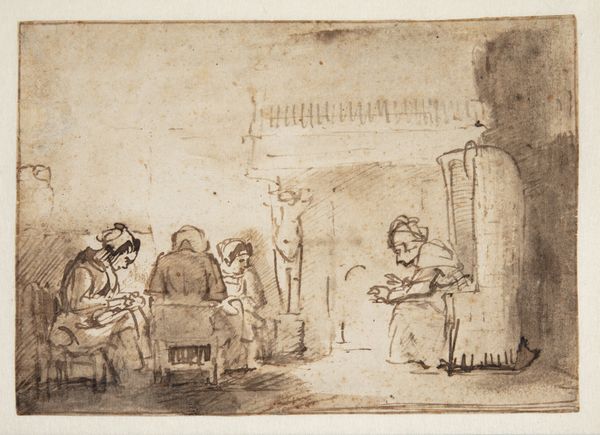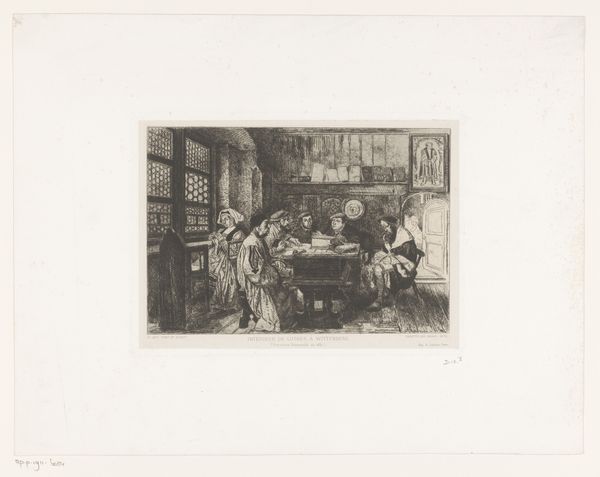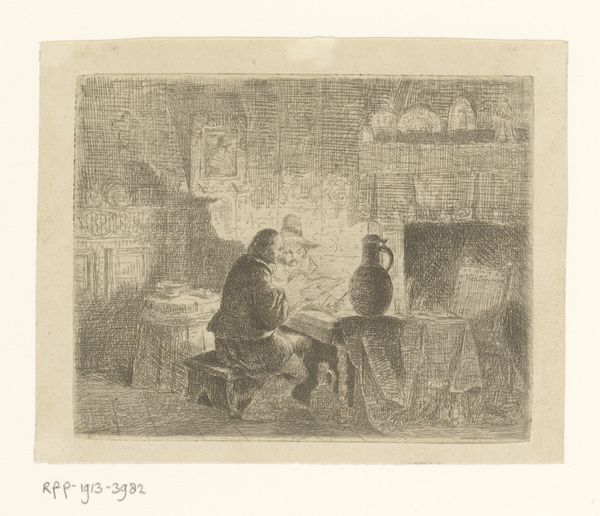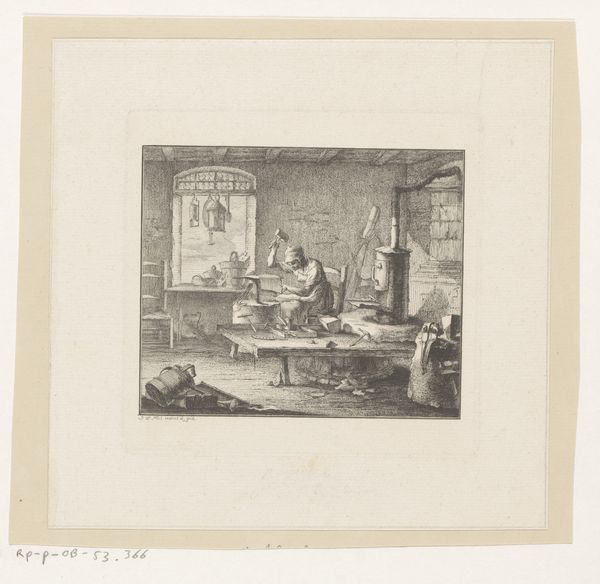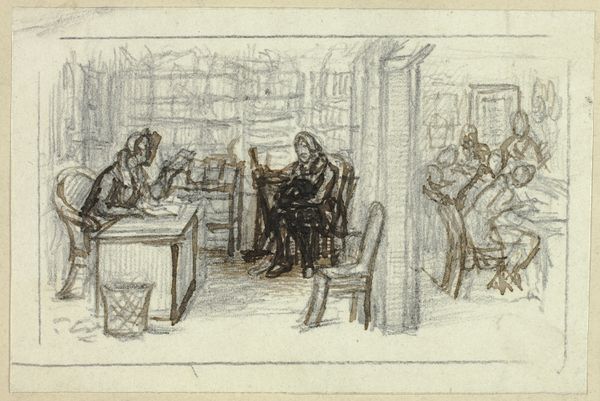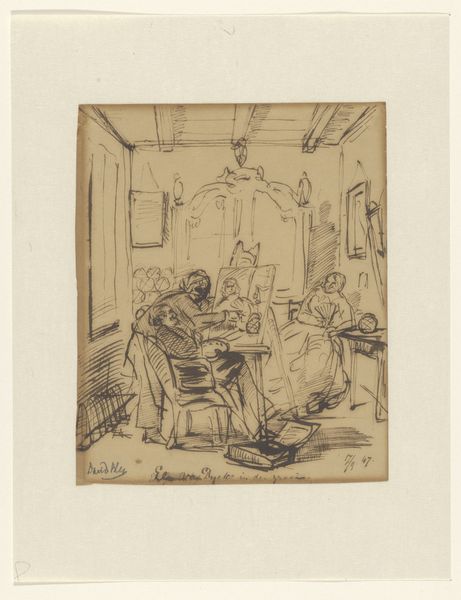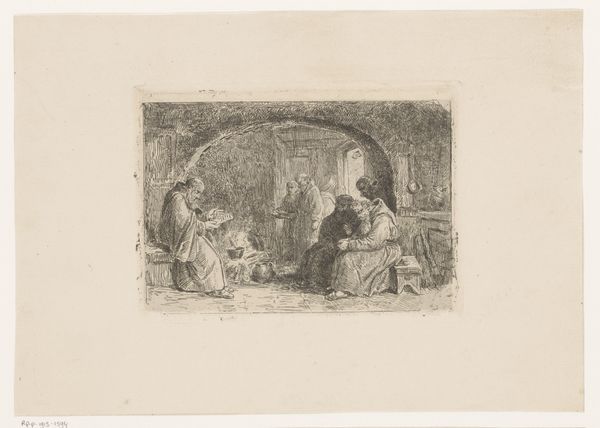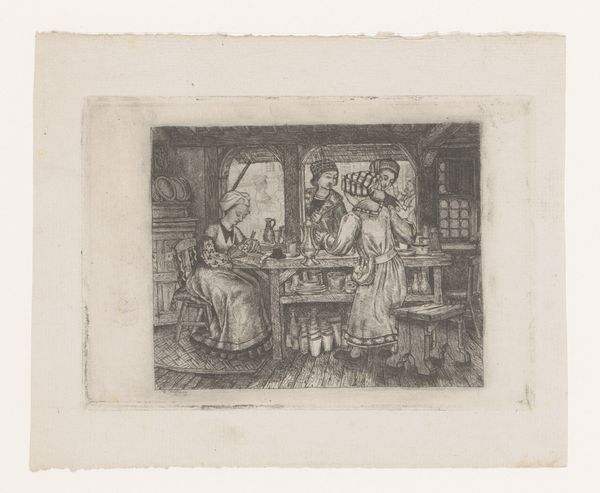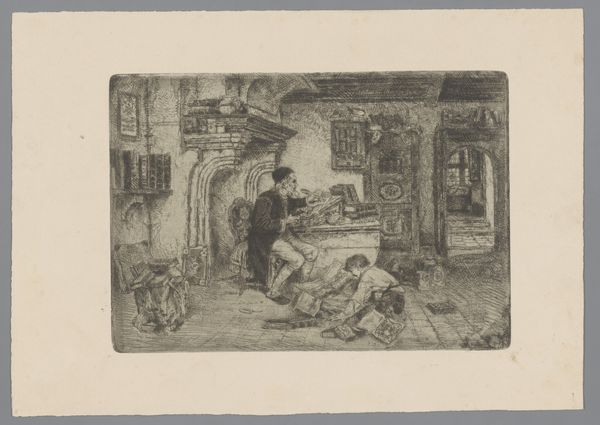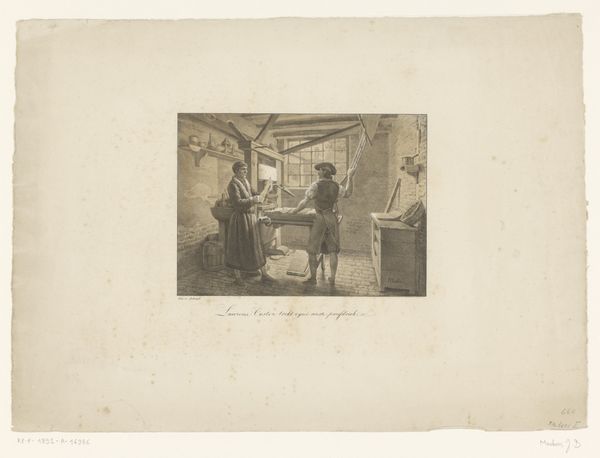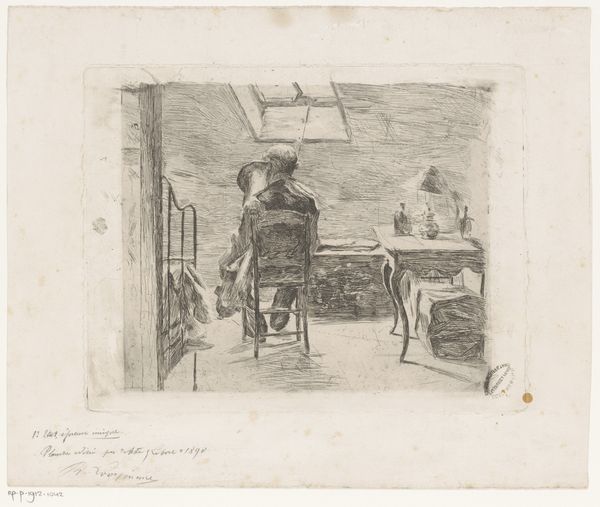
drawing, ink
#
drawing
#
comic strip sketch
#
neoclassicism
#
sketch book
#
cartoon sketch
#
figuration
#
personal sketchbook
#
ink
#
sketchwork
#
ink drawing experimentation
#
sketchbook drawing
#
genre-painting
#
storyboard and sketchbook work
#
cartoon carciture
#
sketchbook art
Dimensions: height 100 mm, width 128 mm
Copyright: Rijks Museum: Open Domain
Editor: Here we have Cornelis Brouwer’s "Kaarssnuitende man", made with ink around 1782 to 1787. The drawing depicts three men around what appears to be an etching press and work area. The use of sepia ink gives it an interesting muted quality. What’s your take on this scene? Curator: I’m immediately drawn to the materiality of this piece, or rather, the implications of its making. Think about the labor involved in producing ink at that time. Sepia ink, especially, often involved complex and sometimes unpleasant processes utilizing organic matter. Knowing this influences how we view this "genre painting," doesn't it? It speaks volumes about the economic and social underpinnings of art production in the late 18th century. Editor: It does change things! So the artistic choices, even something as seemingly simple as the ink color, were influenced by production chains and availability of resources? Curator: Precisely. Furthermore, the sketch-like quality isn’t just a stylistic choice. Consider the economics of artistic training. A rapidly executed drawing might have been a way to quickly capture ideas for a larger, more ‘finished’ work. Or perhaps, an exploration for a print that would eventually circulate and generate income. Look at the presence of the etching press – it emphasizes the reproductive nature of the work. Does that hint at wider consumer markets? Editor: It's interesting to think of a piece like this in terms of its potential to become a widely available print. It's almost like looking at the blueprint for a product. Curator: Indeed! And don't overlook the social context. Genre paintings often depicted scenes of everyday life, but were they truly ‘everyday’ for everyone? Who had the time and resources to be represented in such works? The labor reflected in the art, mirrors the labor of the subjects *within* the art, creating another complex layer. Editor: I hadn't considered that, but it's a fascinating lens to look through. I am thinking about it as both depicting work and being work! Curator: Exactly! Art itself as labor, and labor as subject, intricately intertwined. I now see this sketch as something much richer and revealing about its time.
Comments
No comments
Be the first to comment and join the conversation on the ultimate creative platform.
